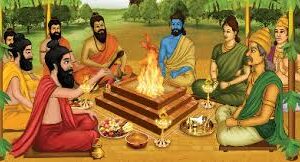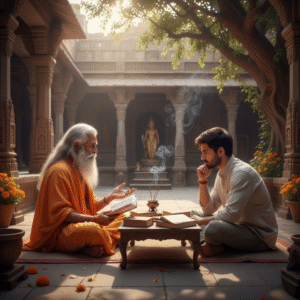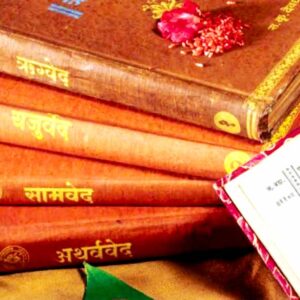TheShastras, revered asSmriti(that which is remembered), serve as interpretative guides to theVedas, the foundational scriptures of Hinduism. While theVedasare considered divine revelations (Shruti) containing universal truths and cosmic principles, the Shastras contextualize these teachings, adapting them to societal, ethical, and philosophical frameworks. This interpretative nature of the Shastras not only bridges the metaphysical insights of the Vedas with practical life but also highlights the dynamic interplay between faith and reason in Hindu thought.
The Purpose of Shastras
The Shastras encompass a wide range of texts, including theDharma Shastras(ethical and legal guidelines),Arthashastra(governance and economics), andNatyashastra(performing arts). Their primary function is to interpret and apply the abstract and eternal principles of the Vedas to the evolving realities of human life.
Key Features of Shastric Interpretation:
- Ethical Frameworks: Texts like the Manusmriti translate Vedic principles of Dharma (righteousness) into detailed moral codes for individuals and society.
- Practical Guidance: The Shastras address governance, law, and cultural practices, making Vedic wisdom actionable in everyday contexts.
- Adaptability: Unlike the eternal truths of the Vedas, Shastric teachings evolve with time, reflecting societal changes and new challenges.
- Philosophical Depth: Many Shastras incorporate philosophical discourse, ensuring that the application of Vedic teachings is both reasoned and contextual.
For example, theArthashastra, attributed to Kautilya, applies Vedic principles to governance and statecraft, offering strategies that are as relevant today as they were in ancient India.
How Shastras Interpret Vedic Texts
1.From Cosmic to Social Order
The Vedas emphasizeRita(cosmic order), the universal principle of harmony and truth. The Shastras translate this intoDharma, a set of ethical and social duties that align human actions with cosmic principles.
- Example: The Manusmriti codifies Dharma into laws governing social roles, justice, and moral conduct, ensuring societal stability.
2.Bridging Rituals and Ethics
The Vedas are rich in rituals, detailing practices likeyajnas(sacrifices) to maintain cosmic harmony. The Shastras contextualize these rituals, integrating them with ethical teachings to make them relevant for individuals and communities.
- Example: The Apastamba Dharma Sutra combines ritual instructions with ethical guidelines, emphasizing the moral significance of Vedic practices.
3.Philosophy and the Arts
The Shastras extend Vedic concepts into cultural and intellectual domains, demonstrating their versatility. TheNatyashastra, for instance, draws from Vedic ideas of cosmic rhythm and aesthetics to create a framework for performing arts.
- Example: The portrayal of rasa (emotions) in the Natyashastra reflects the philosophical depth of Vedic thought on the human experience.
Complementary or Contradictory?
The relationship between the Vedas and Shastras is often debated. Are they complementary in their aims, or do they present conflicting perspectives?
Complementary Aspects:
- The Vedas provide eternal principles; the Shastras adapt them to temporal realities.
- The Vedas emphasize spirituality and cosmic order; the Shastras focus on practical application and societal harmony.
Potential Contradictions:
- The timeless nature of the Vedas can sometimes clash with the contextual flexibility of the Shastras.
- Certain Shastric texts, such as the Manusmriti, have been critiqued for rigid social hierarchies, which some argue deviate from the inclusivity of Vedic teachings.
Relevance in Contemporary Times
The interpretative nature of the Shastras remains highly relevant today:
- Ethical Frameworks: Shastric teachings on Dharma continue to inspire discussions on morality and justice.
- Governance and Policy: Insights from texts like the Arthashastra are being revisited in modern governance and economics.
- Cultural Preservation: The integration of Vedic spirituality with Shastric practicality ensures the continuity of Indian traditions while allowing adaptation to changing times.
Conclusion
The Shastras, as interpretative texts, offer a philosophical lens on the eternal wisdom of the Vedas, bridging the spiritual and the practical. By contextualizing Vedic principles, they create a dynamic tradition that evolves with time while remaining anchored in universal truths. This interplay between the Vedas and Shastras underscores the richness of Hindu thought, offering timeless insights for both personal growth and societal development. Understanding their complementary roles is key to appreciating the depth and adaptability of India’s intellectual and spiritual heritage.









